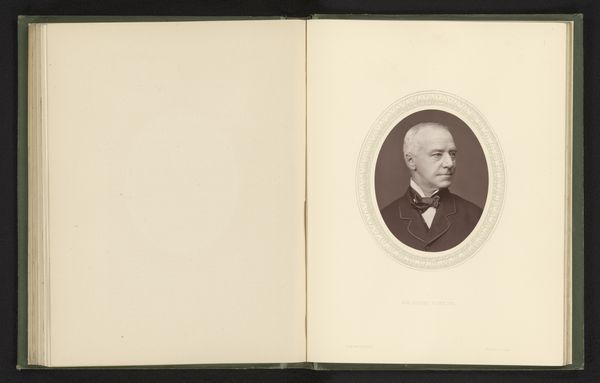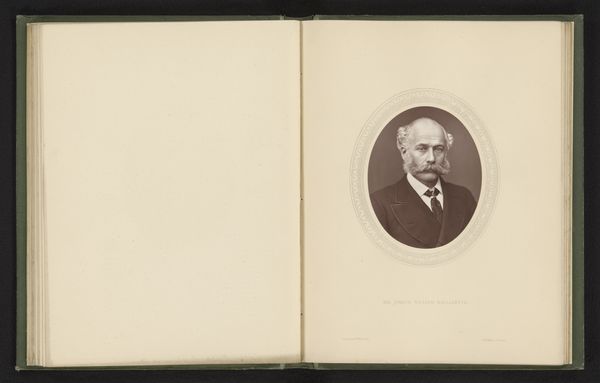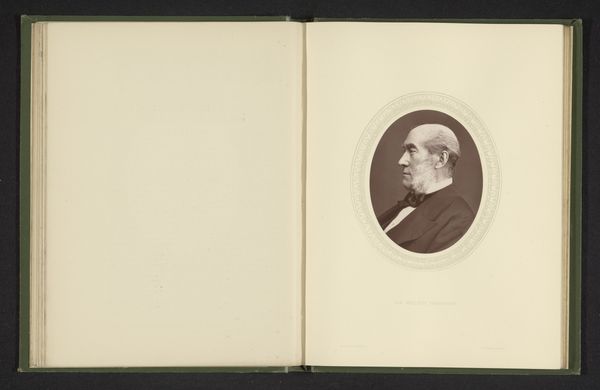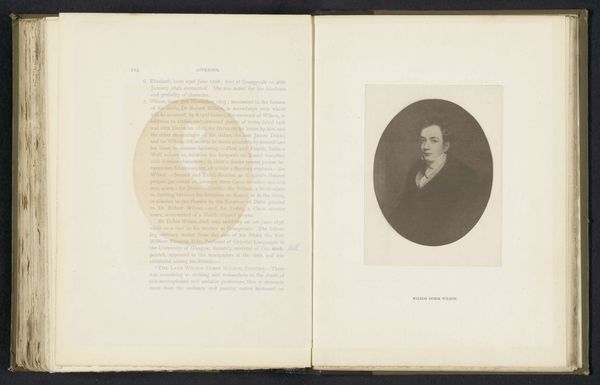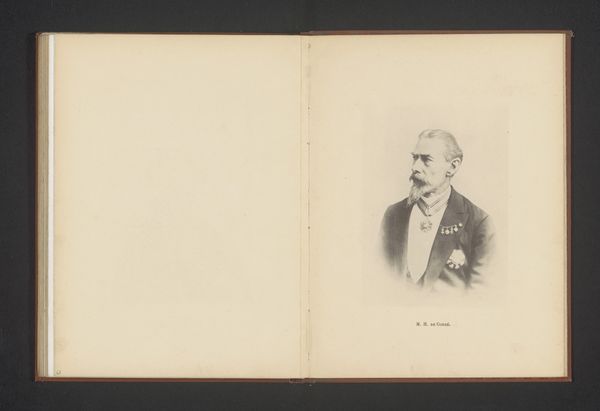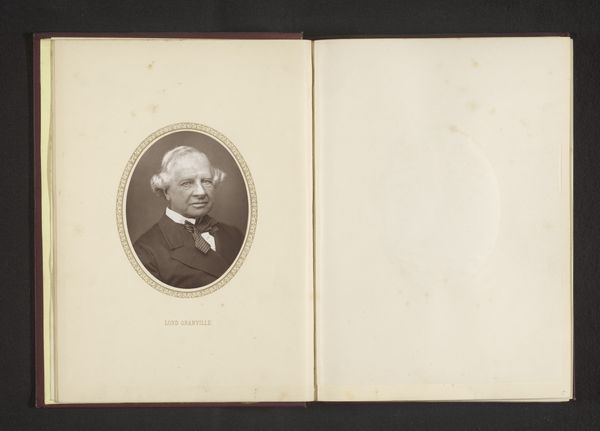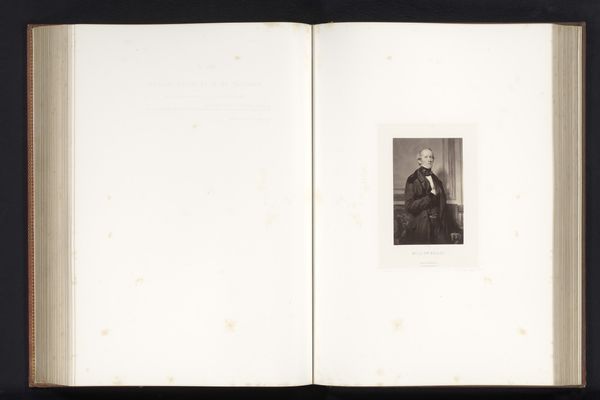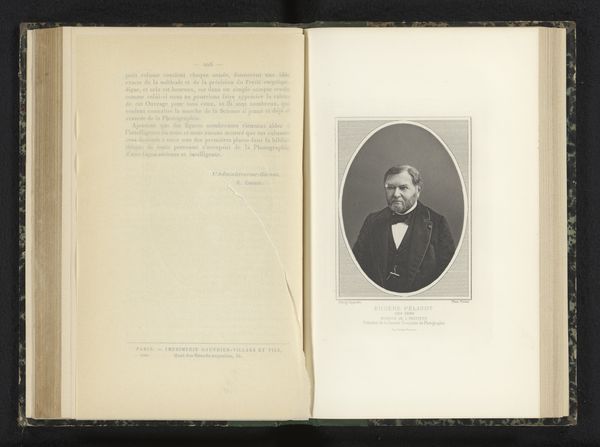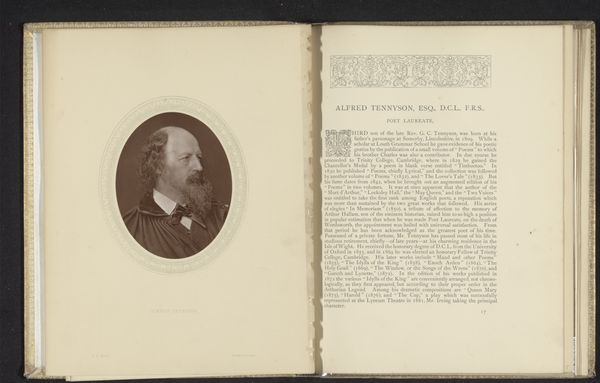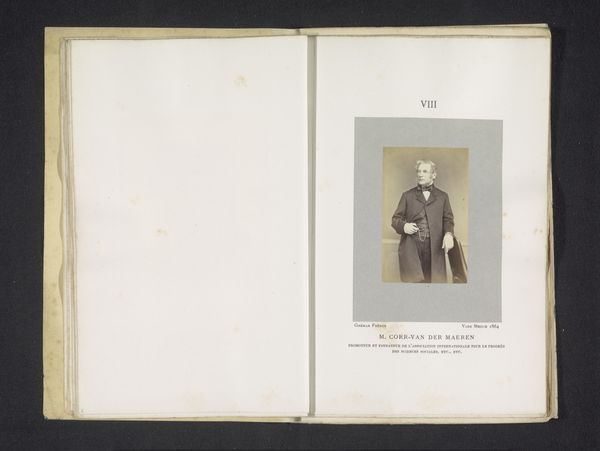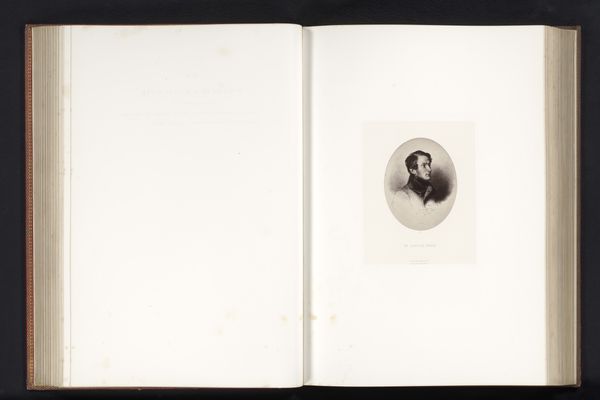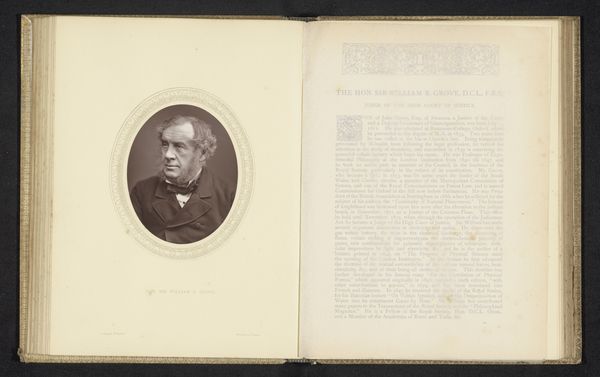
photography, albumen-print
#
portrait
#
photography
#
albumen-print
Dimensions: height 115 mm, width 89 mm
Copyright: Rijks Museum: Open Domain
Curator: This portrait of Jules Verne, created by Antoine Samuel Adam-Salomon sometime before 1877, really captures the imagination. It’s an albumen print, so it has that wonderfully warm, sepia tone characteristic of early photography. What’s your first take? Editor: I'm struck by the starkness of the setting juxtaposed against the almost romanticized depiction of Verne himself. He's framed by this decorative oval, lending an air of classical nobility to the father of science fiction. Curator: Right, but let’s dig a little deeper into that "romanticized" air. The albumen process itself is fascinating—essentially using egg whites to bind the photographic chemicals to the paper. It was laborious. Consider what that says about photographic portraiture intended for wider consumption at that time, particularly given that Verne was becoming a major literary figure. Editor: Precisely. His image is becoming a commodity. It mirrors his literary themes in its intersectional context of colonialism and resource extraction. We are presented with this refined image as European industrial expansion unfolds – of which, incidentally, he was both a visionary and perhaps, unknowingly, a propagandist. Curator: An important consideration. Beyond the process, there’s also Adam-Salomon's skill as a portraitist. He was known for his dramatic lighting, sculpting the face and figure with light and shadow to emphasize particular characteristics. Editor: Note that despite the meticulous craft evident, what is absent says almost as much. Why depict him only in this formal attire? What statement do we assume is made by him staring off, presumably in thought? By omitting aspects of Verne the creator we’re faced with reflecting on class, industrial revolution, colonialism. The image presents a moment arrested; an air of privileged detachment. Curator: It speaks to the very nature of celebrity and representation in the 19th century. Think of how widely circulated these images were through cartes-de-visite and how this helped fuel celebrity culture. The print being contained within a photograph album shifts our ideas on value. Editor: It humanizes an icon while also highlighting how, as his books’ popularity grew, his identity increasingly transformed into a cultural symbol inseparable from narratives of innovation, exploration, and colonial ambition. It encapsulates a critical moment in the trajectory of both Verne and a changing society grappling with technological advancement and its consequences. Curator: Well, it certainly gives us a lot to consider about Verne, photography, and image consumption during the Victorian era. Thanks. Editor: My pleasure. The man who conjured so much of the future forever frozen in the past. Profound.
Comments
No comments
Be the first to comment and join the conversation on the ultimate creative platform.
